 by our College Data Analytics Team
by our College Data Analytics TeamBYU - I total enrollment is approximately 44,481 students.
Male/Female Breakdown of Undergraduates
The full-time BYU - I undergraduate population is made up of 53% women, and 47% men.
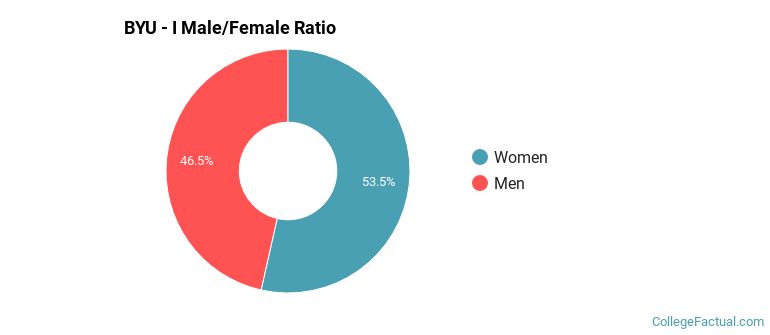
For the gender breakdown for all students, go here.
BYU - I Racial/Ethnic Breakdown of Undergraduates
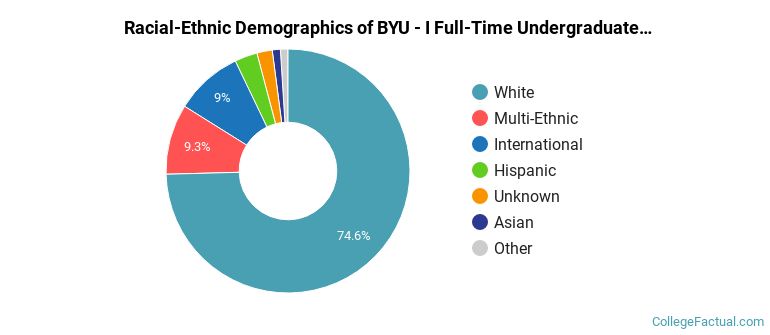
| Race/Ethnicity | Number |
|---|---|
| White | 13,883 |
| Multi-Ethnic | 1,880 |
| International | 1,863 |
| Hispanic | 531 |
| Unknown | 232 |
| Asian | 187 |
| Black or African American | 123 |
| Native Hawaiian or Pacific Islander | 87 |
See racial/ethnic breakdown for all students.

| Race/Ethnicity | Number |
|---|---|
| White | 29,664 |
| International | 7,763 |
| Multi-Ethnic | 3,851 |
| Hispanic | 1,394 |
| Unknown | 754 |
| Asian | 422 |
| Native Hawaiian or Pacific Islander | 292 |
| Black or African American | 234 |

There are approximately 25,109 female students and 19,372 male students at BYU - I.
BYU - I ranks 46 out of 2,183 when it comes to geographic diversity.
78.21% of BYU - I students come from out of state, and 2.77% come from out of the country.
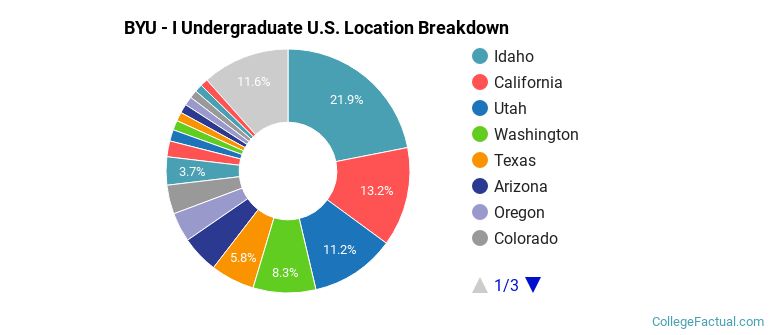
The undergraduate student body is split among 48 states (may include Washington D.C.). Click on the map for more detail.
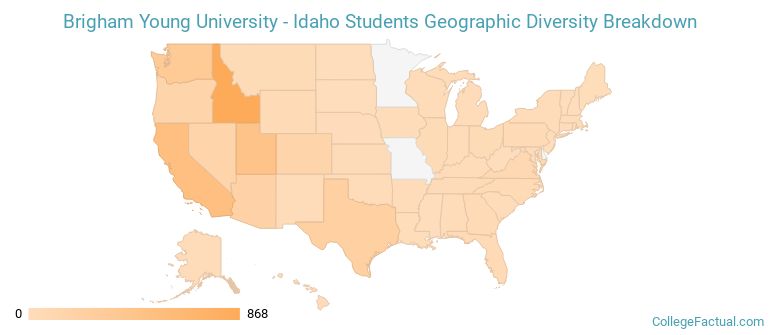
| State | Amount |
|---|---|
| Idaho | 868 |
| California | 521 |
| Utah | 445 |
| Washington | 329 |
| Texas | 231 |
Students from 93 countries are represented at this school, with the majority of the international students coming from Canada, Mexico, and Brazil.
Learn more about international students at BYU - I.
A traditional college student is defined as being between the ages of 18-21. At BYU - I, 29.37% of students fall into that category, compared to the national average of 60%.
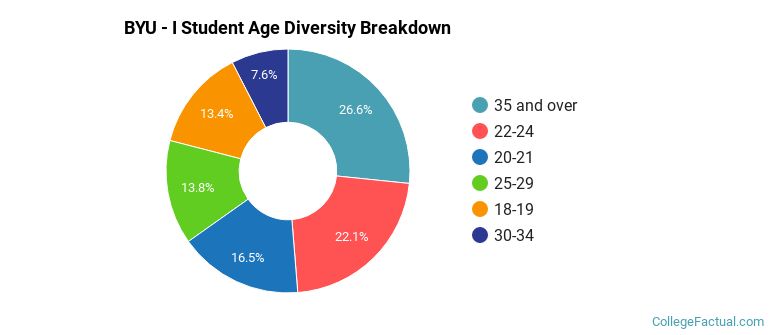
| Student Age Group | Amount |
|---|---|
| 35 and over | 13,568 |
| 22-24 | 11,260 |
| 20-21 | 8,394 |
| 25-29 | 7,043 |
| 18-19 | 6,841 |
| 30-34 | 3,849 |
| Under 18 | 0 |
Footnotes
*The racial-ethnic minorities count is calculated by taking the total number of students and subtracting white students, international students, and students whose race/ethnicity was unknown. This number is then divided by the total number of students at the school to obtain the racial-ethnic minorities percentage.
References
Department of Homeland Security Citizenship and Immigration Services
Find out how College Factual created their Diversity Rankings.